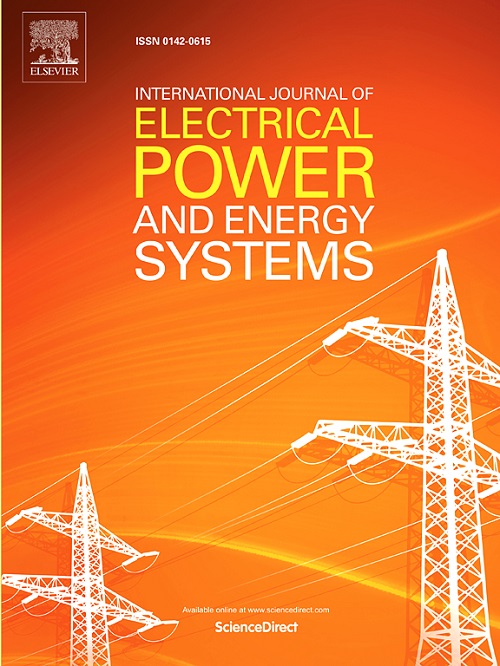Day-ahead composite load forecasting for more informed load modelling and network operation
IF 5
2区 工程技术
Q1 ENGINEERING, ELECTRICAL & ELECTRONIC
International Journal of Electrical Power & Energy Systems
Pub Date : 2025-09-20
DOI:10.1016/j.ijepes.2025.111163
引用次数: 0
Abstract
Demand side management (DSM) programmes offer promising solutions to facilitate operation and planning of modern power systems. A key aspect in successful deployment of DSM programmes is defining the level of flexibility of the demand side, i.e., the contribution of controllable loads to the total demand. Estimation or forecasting of load composition can help aggregators or suppliers identify controllable loads and times of the day when DSM programmes are more impactful. The information about load composition facilitates more comprehensive load modelling of the demand, which enables more accurate short-term and long-term network studies. This paper presents a methodology for day-ahead forecasting of the composite load model and flexibility of aggregated active and reactive demand in distribution network. The research relies on sub-metering data at end users’ premises and focuses on the application of feedforward artificial neural network (FFANN), long short-term memory (LSTM) and gated recurrent unit (GRU) for forecasting active and reactive loads, with subsequent decomposition of these loads into the composite load model components. As the accuracy of artificial intelligence (AI) methods tends to be area-specific, the proposed flexibility forecasting method was tested on the electrical demand of two cities in India, namely Bangalore and Itanagar. Load decomposition based on the forecasting results reveals that FFANN generally produces the most accurate predictions of load components, although LSTM and GRU provide comparable outcomes in specific cases. The study highlights the importance of selecting the appropriate neural network model and input configuration, with significant implications for improving forecasting accuracy and load management in power systems.
日前综合负荷预测,为更明智的负荷建模和网络运行
需求侧管理计划为现代电力系统的运作和规划提供了有希望的解决方案。成功部署用电需求管理计划的一个关键方面是确定需求方的灵活性水平,即可控负荷对总需求的贡献。负荷组成的估计或预测可以帮助集成商或供应商确定可控制的负荷和一天中DSM计划更有影响力的时间。有关负荷组成的资料有助于更全面地建立需求负荷模型,从而更准确地进行短期和长期电网研究。本文提出了配电网综合负荷模型的日前预测方法及有功和无功总需求的柔性。该研究依赖于终端用户的分计量数据,重点关注前馈人工神经网络(FFANN)、长短期记忆(LSTM)和门控循环单元(GRU)的应用,用于预测主动和无功负荷,随后将这些负荷分解为复合负荷模型组件。由于人工智能(AI)方法的准确性往往具有区域特异性,因此本文提出的灵活性预测方法在印度班加罗尔和伊塔那加两个城市的电力需求上进行了测试。基于预测结果的负荷分解表明,尽管LSTM和GRU在特定情况下提供了可比较的结果,但FFANN通常对负荷成分做出了最准确的预测。该研究强调了选择合适的神经网络模型和输入配置的重要性,对提高电力系统的预测精度和负荷管理具有重要意义。
本文章由计算机程序翻译,如有差异,请以英文原文为准。
求助全文
约1分钟内获得全文
求助全文
来源期刊
CiteScore
12.10
自引率
17.30%
发文量
1022
审稿时长
51 days
期刊介绍:
The journal covers theoretical developments in electrical power and energy systems and their applications. The coverage embraces: generation and network planning; reliability; long and short term operation; expert systems; neural networks; object oriented systems; system control centres; database and information systems; stock and parameter estimation; system security and adequacy; network theory, modelling and computation; small and large system dynamics; dynamic model identification; on-line control including load and switching control; protection; distribution systems; energy economics; impact of non-conventional systems; and man-machine interfaces.
As well as original research papers, the journal publishes short contributions, book reviews and conference reports. All papers are peer-reviewed by at least two referees.

 求助内容:
求助内容: 应助结果提醒方式:
应助结果提醒方式:


